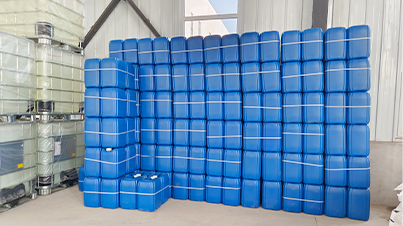polyacrylamide function
The Role and Function of Polyacrylamide in Various Applications
Polyacrylamide (PAM) is a polymer that has gained immense popularity in various industries due to its unique properties and versatility. It is a synthetic polymer made from acrylamide monomers, which can be modified into various forms, including anionic, cationic, and non-ionic variants. This article explores the functions and applications of polyacrylamide across different sectors, highlighting its importance in both commercial and industrial contexts.
1. Water Treatment
One of the primary applications of polyacrylamide is in water treatment. PAM is widely utilized as a flocculating agent, which helps in the aggregation of suspended particles in water. By promoting the clumping of these particles, polyacrylamide enhances the separation of solids from liquids, leading to clearer water. This process is crucial in municipal wastewater treatment plants, where PAM assists in removing contaminants, thus helping to meet regulatory standards for water quality.
Additionally, polyacrylamide is used in the paper industry for dewatering processes. It aids in enhancing the clarity of paper products and significantly reduces the amount of sludge generated during manufacturing. The use of PAM in this sector not only improves productivity but also contributes to more sustainable practices by minimizing waste.
2. Agriculture
In agriculture, polyacrylamide is utilized to improve soil structure and water retention. Its ability to absorb and retain water makes it particularly beneficial in arid regions, where soil moisture can be a limiting factor for crop production. By mixing PAM into the soil, farmers can enhance moisture availability, thereby promoting better plant growth and yield.
Moreover, polyacrylamide serves as a soil conditioner, helping to reduce erosion and improve nutrient availability. It creates a more stable soil structure, which enhances the soil’s ability to hold organic matter and nutrients. This quality is especially valuable in sustainable farming practices, where maintaining soil health is paramount.
3. Oil Recovery
.
The oil and gas industry also benefits from the use of polyacrylamide. In enhanced oil recovery (EOR) processes, PAM is employed to improve the viscosity of injected water, allowing for more efficient extraction of oil from reservoirs. By increasing the sweep efficiency, polyacrylamide helps to mobilize the oil trapped in porous geological formations, ultimately leading to higher yields.
polyacrylamide function

Additionally, polyacrylamide is used in drilling fluids to stabilize boreholes and prevent water loss. The unique properties of PAM allow for enhanced performance of drilling operations, which in turn helps to optimize production efficiency and reduce costs.
4. Cosmetic and Personal Care Products
Beyond industrial applications, polyacrylamide finds its place in the cosmetic and personal care sectors. It is commonly used as a thickening agent in lotions, creams, and gels, providing desirable textures and stability. Its ability to form a film on the skin also contributes to the moisturizing properties of many cosmetic formulations.
Furthermore, PAM is employed in hair care products, where it acts as a conditioning agent, improving the manageability and overall appearance of hair. The versatility of polyacrylamide in this realm speaks to the increasing demand for high-performance ingredients in beauty and personal care formulations.
5. Environmental Applications
In environmental science, polyacrylamide plays a crucial role in soil and sediment stabilization. It can be used in the restoration of contaminated soils and the control of erosion in sensitive areas. By binding soil particles together, PAM prevents runoff and promotes the establishment of vegetation, contributing to ecosystem recovery.
Moreover, polyacrylamide is being researched for its potential in the removal of pollutants from industrial effluents. Its ability to encapsulate contaminants can facilitate the cleanup of hazardous waste sites, showcasing its utility in addressing environmental challenges.
Conclusion
In summary, polyacrylamide is a versatile polymer with a wide range of applications spanning various industries. From water treatment and agriculture to oil recovery and cosmetics, its unique properties make it an invaluable resource. As research continues to uncover new applications and formulations, the role of polyacrylamide in addressing both industrial needs and environmental concerns is likely to grow, solidifying its position as a critical material in modern technology and sustainability efforts. Its multifunctional capabilities reflect the ongoing innovation in polymer science and its impact on daily life.
-
Pbtc Scale InhibitorPBTC: A Scale Protector for Industrial Water TreatmentNewsAug.05,2025
-
Organic Phosphonate: An Efficient Defender in the Field of Scale InhibitionNewsAug.05,2025
-
Hydrolyzed Polymaleic Anhydride: Green Pioneer in Scale Inhibition FieldNewsAug.05,2025
-
PAPEMP Polyamino Polyether Methylene Phosphonic Acid For SaleNewsAug.05,2025
-
Flocculant Water Treatment: A Pioneer in Purification in the Field of Water TreatmentNewsAug.05,2025
-
Benzyl Isothiazolinone: An Efficient and Broad-Spectrum Antibacterial Protective GuardNewsAug.05,2025





